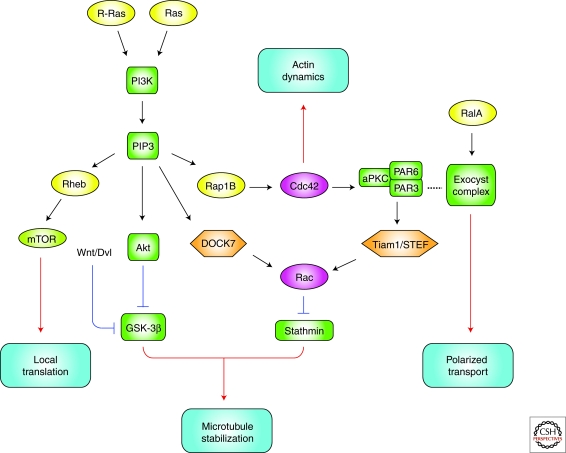Figure 2.
Rho and Ras GTPases in axon initiation. A simplified scheme showing some of the main axon initiation pathways involving Rho and Ras GTPases. Activation of Ras downstream of extracellular stimuli or adhesion to extracellular matrix leads to a phosphatidylinositol 3-kinase (PI3K)-mediated cascade of small GTPases regulating axon initiation, including the other Ras family members Rap1B and Rheb. Rap1B acts upstream of Cdc42 and the Par3/Par6/aPKC polarity complex, which can locally activate Rac through the Rac GEFs Tiam1 and STEF, and control not only actin dynamics, but also microtubule stability by inhibition of the microtubule destabilizing protein stathmin. The signaling lipid phosphatidylinositol-3, 4, 5-triphosphate (PIP3) produced by PI3K also activates Rac via another GEF, DOCK7, and Rheb, which functions through its effector mammalian target of rapamycin (mTOR), a crucial regulator of translation. Localized inactivation of GSK-3β during axon growth may depend on Akt-dependent phosphorylation, but axon initiation seems to require an alternative mode of inhibition, possibly involving noncanonical Wnt/Dishevelled (Wnt/Dvl) signaling. Finally, RalA may participate in the polarized transport essential for axon initiation through its effector the exocyst complex, which could promote polarized trafficking of the PAR complex (dashed line). See text for a detailed explanation. (Yellow, Ras family GTPases; magenta, Rho family GTPases; orange, GEFs.)

